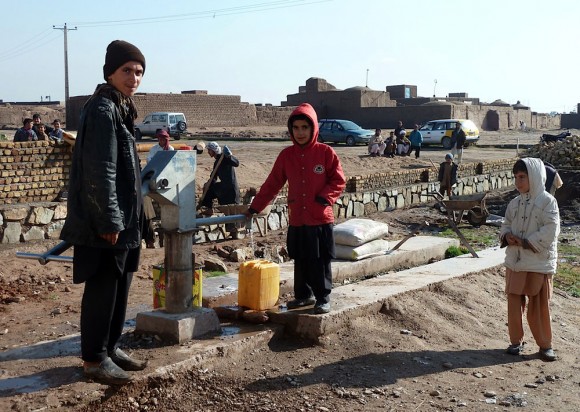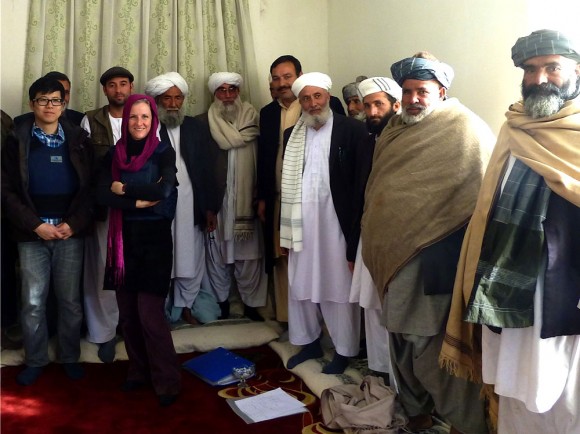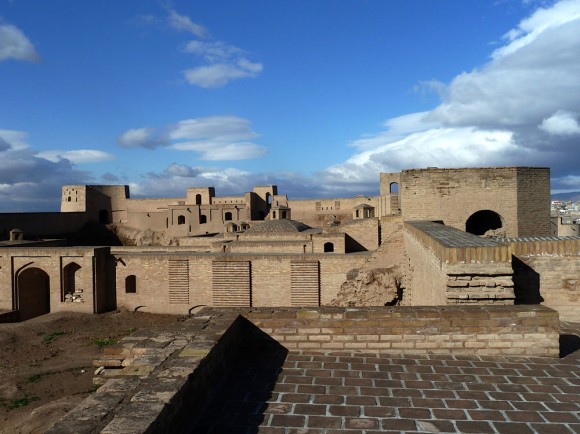I recently travelled to Herat, a beautiful city in the west of the country, with my economist colleague Kevin. Kevin has kindly agreed to write a guest blog about our trip:

As someone returning to Afghanistan, I have found progress in the space of three years – the last time I worked here – extremely encouraging if signs are anything to go by. Literally. Outside our Embassy in Kabul, a giant TV screen advertising 3G mobile phone services acts as a makeshift street light. Other parts of the city too are bustling with growing Afghan consumerism - neighbourhoods specialising in the selling of toy cars, fast food and phone credit. All of this would not look too out of place in Piccadilly Circus!
My day job can be best summarised as helping the Afghan government improve the nitty-gritty aspects of public finances. This includes raising more taxes and spending public money according to need. Or, as a colleague puts it, ensuring that the financial pipes work. Better services provided by government are expected to follow, such as in education, health, roads and access to water. Whilst it is fascinating to have a national perspective from Kabul, I occasionally yearn to see what is happening out in the rest of the country, just as I did when I was in Helmand back in 2009.
You can imagine that I jumped at the chance to join Christa to discover ground truths in Herat. Together we flew on a freezing Saturday morning due west of Kabul. My first impression when we landed was how steeped in history the city is, like many other parts of Afghanistan. Some things have not changed - the remnants of a giant city wall, said to have been constructed by Alexander the Great, can still be seen. Interestingly, for me as an economist, Herat still is the trade route to Iran. Sadly, Herat still suffers from a significant number of landmines from a previous conflict though DFID is financing a project which will eventually make Herat mine-free.
We packed in a lot during the visit. We built on lessons learned from Helmand, on issues that still persist in getting public money into the provinces. I recall a great discussion with provincial directorate officials on where they believe the blockages in the national budget lie. The health sector director eloquently and diplomatically likened this to a tailor having your measurements but giving you a random suit – budgets are not always based on local needs. On a more positive note, we also saw examples of local government and politics working very well, when locally-elected representatives outside the city showed us a school built and maintained by them. This is the water pump that serves the school and houses around it.

When visiting the provincial tax office we also stumbled on a poster informing officials of an upcoming training event provided by DFID. This was a pleasant surprise and perhaps the most joy I have felt looking at essentially an official mandate. You can find out more about how tax collection is helping the country here.

One highlight I did not expect was culinary – we had lunch with Afghan counterparts in a restaurant overlooking the town, with delicious local food.
We also met with the provincial governor during our visit, to talk about an existing DFID support to his office. The conversation was in English (Christa an Austrian, he an Afghan and me originally coming from Hong Kong) as he sat in front of a wall filled with pictures of the last two centuries of Herat’s governors. He wheeled out his economic strategy; music to an economist’s ears. We were even luckier to be invited by him to see the old citadel, used by previous emperors of the city before it was even part of Afghanistan. The panoramic views of the city on offer inside the fort are a sight to behold. This reminded me of something a colleague recently mentioned, having seen it inscribed on a stone outside the Kabul museum: a nation stays alive when its culture stays alive.


1 comment
Comment by Tony Feehan posted on
Why can't you just state the truth and say the provincial governers and the guys at the top of the tree are creaming off millions of pounds before it trickles down to the poor, who are really poor because of the corrupt people overseeing them, what benefit is there is giving Afghans money now the majority of troops are leaving?
You have really dressed this up to sound like Afghanistan is a lovely place to behold, it isn't, it's a dump and millions has been poured down the drain and hundreds of ISFA soldiers have died for nothing.